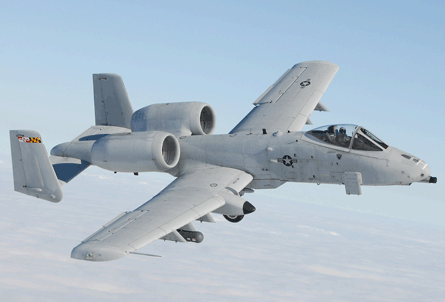A $47 million contract now in competition will challenge defence companies to prove that even unmanned air vehicles can be trusted to strike targets close to friendly troops.
The US Defense Advanced Research Projects Agency has issued a request for proposals for the persistent close air support (PCAS) project, which could lead to a live-fire demonstration in four years.
Two companies could be selected after bids are due on 2 November to submit a preliminary design for adapting the Fairchild A-10C into an optionally piloted vehicle and delivering a kit for the aircraft to be controlled and fire on targets from the ground.
The results of the demonstration could influence the next generation of UAVs. Close air support is one of the missions envisioned by the US Air Force for the MQ-X, a UAV that could replace its General Atomics Aeronautical Systems MQ-1 Predator and MQ-9 Reaper aircraft at the end of this decade.
 |
|---|
Two companies could be selected to submit a preliminary design for adapting the Fairchild A-10C into an optionally piloted vehicle.© Lockheed Martin |
The trick for performing close air support by UAVs is ensuring that the ground controller is attacking the right target, especially with friendly troops so close to the enemy.
DARPA wants the PCAS contractor to demonstrate that the autonomous A-10 can fire on a target within a 55km (30nm) radius less than 6min after receiving a digital request from a human on the ground.
The live-fire demonstration will include accurate strafing with the A-10's GAU-8/A Avenger 30mm cannon, a salvo of 70mm (2.75in) guided or unguided rockets, a laser-guided Raytheon AGM-65E Maverick and a 226kg (500lb) GBU-38 joint direct attack munition.
The A-10 also will be equipped with two targeting pods in order to strike multiple targets simultaneously.
Source: Flight International























